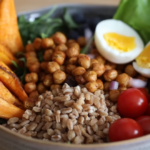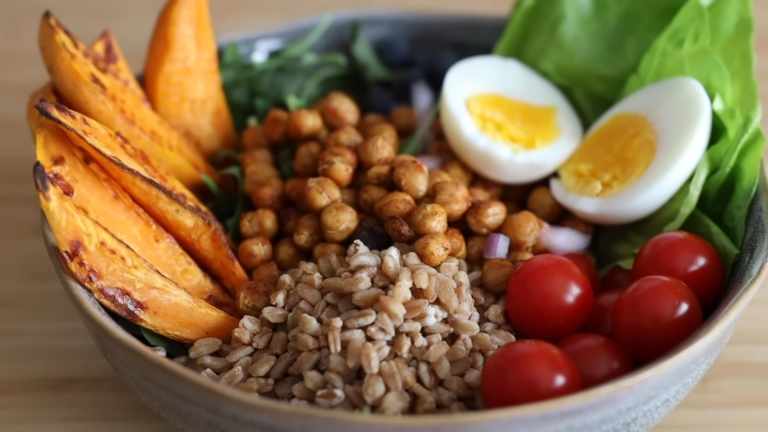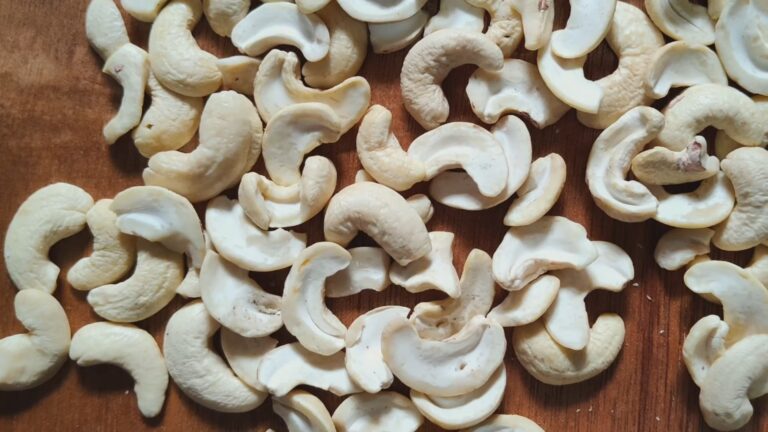If you have been looking to switch up your diet and explore the world of AIP, then you’ve come to the right place! Eating an AIP meal plan is a great way to get healthier and restore balance in your gut. In this blog post, I’ll be sharing what a typical day of eating looks like for me on the AIP diet. So if you’re looking for some delicious inspiration for your next meal, keep reading!
While it might seem like an overwhelming endeavor at first, the diet isn’t as restrictive as you might think – plus, you can customize it to your liking.
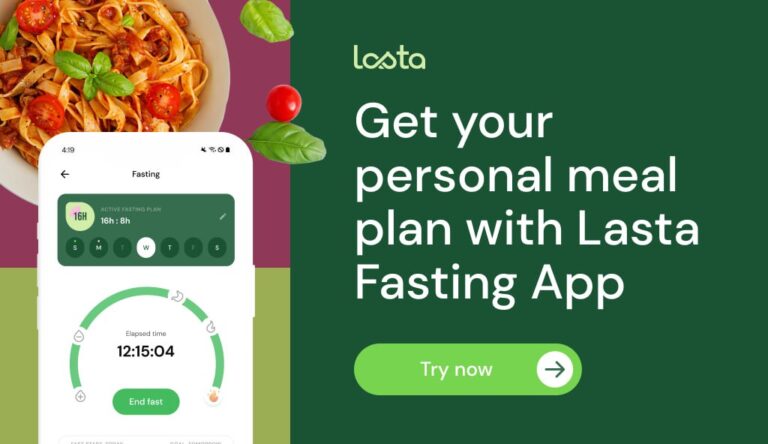
Planning healthy meals can be a daunting task, but it doesn’t have to be. There are many meal planning apps available that can help simplify the process and make it more enjoyable. One great option is the Lasta Fasting app, which offers personalized meal plans based on your dietary preferences and goals. What’s more, the app includes a fasting tracker that can be a useful tool for anyone looking to lose weight in a healthy way. So, whether you’re trying to eat healthier, lose weight, or simply save time, consider giving Lasta Fasting App a try.
The basic diet focuses around whole foods such as organic vegetables, fruits and quality proteins. Refined sugars and grains should be removed or minimized wherever possible for optimal results and a healthy lifestyle. Following this protocol also involves reducing stress levels in order to maximize support for optimal gut health.
By following AIP techniques, one can improve their overall physical efficiency by providing inflammation-fighting fuel that supports their individual needs at each phase of treatment or recovery from a long-term illness or injury.
Page Contents
Benefits

The AIP diet has become popular for people managing autoimmune conditions. This comprehensive plan has helped many sufferers find relief from their symptoms. The AIP diet focuses on whole, nutrient-dense foods that are free of inflammatory agents. It excludes some beverages, grains, dairy products, legumes, processed and refined sugars and seed-based spices.
It is based on the idea that eliminating triggers of inflammation and healing the gut will alleviate symptoms of autoimmune diseases like Hashimoto’s thyroiditis, multiple sclerosis and rheumatoid arthritis while restoring balance to the immune system. By removing certain foods known to disrupt digestive health or activate the immune system, you can reduce inflammation in your body and achieve better overall health.
The benefits of eating an AIP-friendly diet include:
- Reducing inflammation in the body.
- Improving digestion.
- Relieving bloating.
- Improving sleep quality.
- Boosting energy levels.
- Assuaging allergies and food intolerances.
- Reducing pain and stiffness associated with autoimmune conditions.
- Providing vital macronutrients like protein, healthy fats and carbohydrates.
- Promoting a healthy balance of beneficial bacteria in the gut microbiome.
What to Eat on the AIP Diet

This diet seeks to restore health and balance by eliminating foods that could potentially cause inflammation, such as dairy products and grains. Many people have improved their autoimmune symptoms by following this diet, so getting started can be beneficial in the long run.
Here is a list of what you can eat when following the AIP diet:
- Fresh fruits and vegetables (seasonal varieties are best)
- Healthy fats include nuts and seeds, avocado, olive oil, coconut oil, etc.
- Dairy replacements such as almond or cashew milk or coconut yogurt.
- Lean proteins including grass-fed beef, pasture-raised chicken, turkey, etc., wild-caught fish or seafood with low levels of mercury as well as eggs from pasture-raised chickens
- Fermented foods such as kimchi and sauerkraut for added probiotics
- Herbs for seasoning food such as oregano, sage, etc., sea salt for flavor and spices like turmeric for added flavor
- Bone Broth for additional minerals
By eating a variety of fresh fruits and vegetables throughout the day on the AIP diet your body should receive adequate fiber which helps to keep you feeling full whilst supporting a healthy gut microbiome. Aim to make each meal plant-based where possible with some lean protein sources in order to get all essential nutrients while reducing inflammation through this diet plan.
Planning a Typical AIP Diet Meal Plan
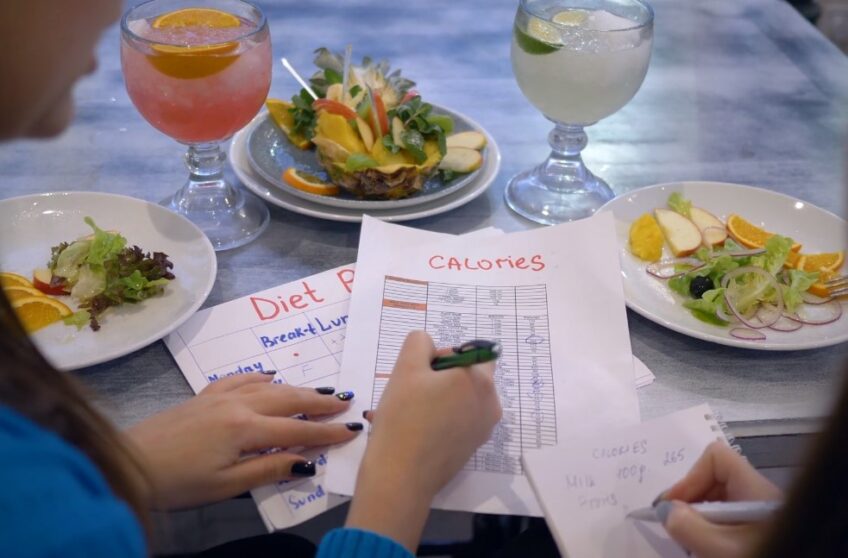
A key component of the AIP diet is meal planning. Meal planning helps to ensure that your meals are enjoyable, nutritious and optimized for your health goals.
To plan the ideal AIP diet meal plan, start by considering all of your meals including breakfast, lunch, dinner and snacks throughout the day. When choosing foods for each meal, think about using seasonal ingredients or rotating dietary staples like proteins, fats and vegetables as much as possible to add variety and flavor to your meals. Nourishing yourself with a variety of nutrient-dense foods can help replace essential vitamins, minerals and other micronutrients that you may have lost to poor nutrition or illness.
Sample of Diet Meal Plan
Here is a sample meal plan for what someone following the AIP diet might eat in a day:
Breakfast:
- Scrambled eggs with sautéed vegetables (spinach, mushrooms, onions)
- Sautéed or steamed sweet potato on the side
Lunch:
- Arugula salad with mixed greens, topped with grilled chicken or fish, and a homemade vinaigrette dressing made with olive oil, lemon juice, and herbs
- A side of roasted vegetables (carrots, broccoli, cauliflower)
Snack:
- Fresh berries (strawberries, blueberries, raspberries) with coconut cream
Dinner:
- Grilled lamb chops with a side of steamed or sautéed greens (kale, collard greens, chard)
- A side of roasted root vegetables (beets, turnips, parsnips)
Or you can try this one:
Breakfast:
- Egg bake with mixed vegetables;
- Smoothie bowl topped with nuts & seeds;
- Coconut flour pancakes topped with fresh berries
Lunch:
- Zucchini noodle salad w/ grilled chicken & pesto;
- Baked sweet potato with roasted Brussels sprouts & sliced grass-fed steak;
- Bison & spaghetti squash casserole
Snacks:
- Carrot sticks w/ guacamole;
- Celery slices w/ almond butter ‘boats’;
- Roasted seaweed strips
Dinner:
- Wild salmon wraps with cucumber & red onion;
- Stuffed sweet potato skins loaded up with sautéed mushrooms & spinach;
- Ground turkey burgers over a bed of lettuce
The above meal plans are just a sample and it’s important to keep in mind that the AIP diet is tailored to the individual’s needs, so some modifications may be necessary. Additionally, it’s important to note that the AIP diet eliminates certain foods like grains, legumes, nightshades, dairy, and processed foods, so it’s important to be mindful of this when planning meals.
It’s also important to work with a healthcare professional or a nutritionist before starting this diet as it is a restrictive diet and may not be suitable for everyone.
Tips for Making AIP Diet Meals

Planning healthy meals can be a daunting task, but it doesn’t have to be. There are many meal planning apps available that can help simplify the process and make it more enjoyable. One great option is the Lasta Fasting app, which offers personalized meal plans based on your dietary preferences and goals. What’s more, the app includes a fasting tracker that can be a useful tool for anyone looking to lose weight in a healthy way. So, whether you’re trying to eat healthier, lose weight, or simply save time, consider giving Lasta Fasting App a try.
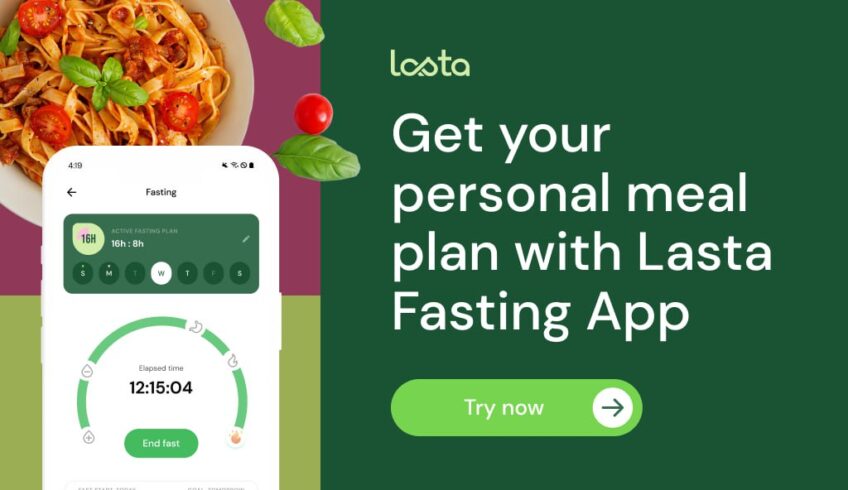
Following an AIP diet plan requires consistency and structure to ensure that meals are not only tasty but packed with nutrients. Here are some tips to help you make the most out of your AIP meal plan:
Plan ahead:
Making a detailed meal plan will help you stay on track and will save time in the long run. Consider prepping most of your meals for the week ahead of time or having an AIP-friendly backup meal ready in case you run out of time.
Stock up on staples:
To simplify your meal plans, it is helpful to keep staple ingredients like canned fish, frozen meats, prepared bone broth and fresh produce handy at all times. This ensures that you always have AIP-friendly ingredients at hand no matter how busy life gets!
Experiment with flavors:
Experimenting with different flavors is key when following an AIP diet. Try adding herbs and spices for additional texture and depth in each dish. Fresh herbs go a long way for flavor enhancement!
Incorporate nutrient-dense foods:
Nutrient-dense foods like organ meats, wild-caught seafood and fermented vegetables are great additions to any AIP menu as they provide the necessary vitamins & minerals needed for optimal health while following this protocol. Don’t be afraid to explore new recipes that use these ingredients as each one adds unique benefits to the body!
Common Mistakes to Avoid on the AIP Diet

Beginning the AIP diet can be overwhelming and it can be difficult to know where to start. To make this process easier, here are some common mistakes that people often make when starting the AIP diet so that you can quickly get on the right track.
- Eating too many foods is known as a “gray area” or “sometimes” food. These foods may have health benefits, but they should be kept to a minimum in order to achieve the best results on the AIP diet.
- Not eating enough nutrient-dense foods. It is important to focus on quality ingredients by including plenty of fruits and vegetables in your meals, as well as healthy proteins and fats such as grass-fed meats and wild seafood, pastured eggs, nuts & seeds, and avocados & olives.
- Trying to make all your meals AIP-compliant without considering food intolerances or sensitivities which may be causing symptoms or hindering progress on the diet. Before adding a new food item, consider whether this could potentially aggravate underlying problems or existing symptoms before introducing it into your meal plans regularly.
- Going through drastic changes in lifestyle while on AIP such as cutting out exercise routines or long runs until full symptom relief is achieved. The AIP diet is meant to reduce inflammation within your body – however, without proper movement, you may experience stiffness and an overall weakened state if exercise is completely removed from your lifestyle for prolonged periods of time due to dietary restrictions alone. Sticking with moderate exercises like walking for 20 minutes per day can help reduce stiffness caused by inflammation and improve overall health during the AIP elimination phases!
FAQ
Can you eat rice on an AIP diet?
Rice is a complex carbohydrate and on the AIP diet, you are supposed to avoid all complex carbs. However, some people do fine with small amounts of rice. You can try eating a small amount of rice and see how you feel. If you don’t have any problems, then you can continue to eat rice in moderation.
Do you lose weight on the AIP diet?
Yes, you can lose weight on the AIP diet. This is because the diet eliminates many processed foods and unhealthy ingredients that can contribute to weight gain. In addition, the AIP diet focuses on eating whole, nutritious foods that are packed with fiber and nutrients, which can help to promote weight loss.
What food eases autoimmune diseases?
It is important to eat a variety of nutrient-rich foods to support overall health and well-being. This includes plenty of fresh fruits and vegetables, whole grains, lean protein sources, and healthy fats. It is also important to limit or avoid processed foods, sugary drinks, and alcohol.
Second, it is often helpful to focus on anti-inflammatory foods that can help reduce inflammation throughout the body. This includes omega-3 rich foods such as fatty fish, flaxseeds, and chia seeds; ginger; turmeric; garlic; and green leafy vegetables.
Finally, it is important to stay hydrated by drinking plenty of water throughout the day. Other beverages like herbal tea and bone broth can also be beneficial for those with autoimmune diseases.
Can you have a cheat day on the AIP diet?
Yes, you can have a cheat day on the AIP diet! Just be sure to make wise choices and don’t overdo it. Choose foods that are AIP-friendly and that you know won’t trigger any negative reactions. Stick to moderate portion sizes, and remember that it’s just one day!
How long should I stay on it?
The answer to this question depends on a few factors, including how long you have been dealing with your autoimmune disease, how severe your symptoms are, and how well you respond to the AIP diet. In general, most people need to stay on the AIP diet for at least 6-8 weeks in order to see significant improvements in their symptoms.
However, some people may need to stay on the diet for longer periods of time (up to a year or more) in order to fully heal their gut and reverse their autoimmune disease.
What can you snack on with the AIP diet?
While the AIP diet is restrictive, there are still plenty of snacks that you can enjoy. Here are some ideas for AIP-friendly snacks:
- Vegetables and dip: carrot sticks, cucumber slices, celery sticks, etc. with a dipping sauce made from olive oil and vinegar or tahini and lemon juice
- Fruit: apples, bananas, grapes, berries, etc.
- Homemade AIP granola or trail mix: made with AIP-friendly ingredients like dried fruit, nuts, and seeds
- AIP crackers: made with cassava flour or other AIP-friendly flour
- Guacamole or avocado toast: made with mashed avocado and seasonings like lime juice, salt, and pepper
- Coconut chips or flakes: a satisfying salty/sweet snack
- Hard-boiled eggs: a protein-packed snack that can be flavored with AIP-safe herbs and spices
Conclusion
In conclusion, the AIP diet is a great way to ward off chronic and autoimmune diseases. To reap the greatest benefits of this diet, one should try to incorporate nutrient-rich plant-based foods and foods rich in healthy fats into their meals. Eating enough protein is also important for maintaining optimal health.
While it can be hard to transition to an AIP meal plan, with adequate planning and motivation you will eventually learn how to successfully navigate this dietary lifestyle in order to improve your overall health.
Astrona Knight is the Editor-in-Chief at Fischer Institute, where she shares her extensive knowledge on health and wellness topics. Her insightful articles cover everything from diet and nutrition to mental health, providing readers with practical tips and the latest research findings.
Also Read:
- Healthy Skin Diet: Eat Your Way to Fabulous Skin
- Fruit That Starts With H - Healthy Letter Diet
- What Can You Eat After Wisdom Teeth Removal?…
- How Long Do Tamales Last - Your New Favorite Leftover Meal
- Are Meal Replacement Shakes Healthy? A Comprehensive…
- 9 Best Meal Replacement Supplements for Diabetics -…





